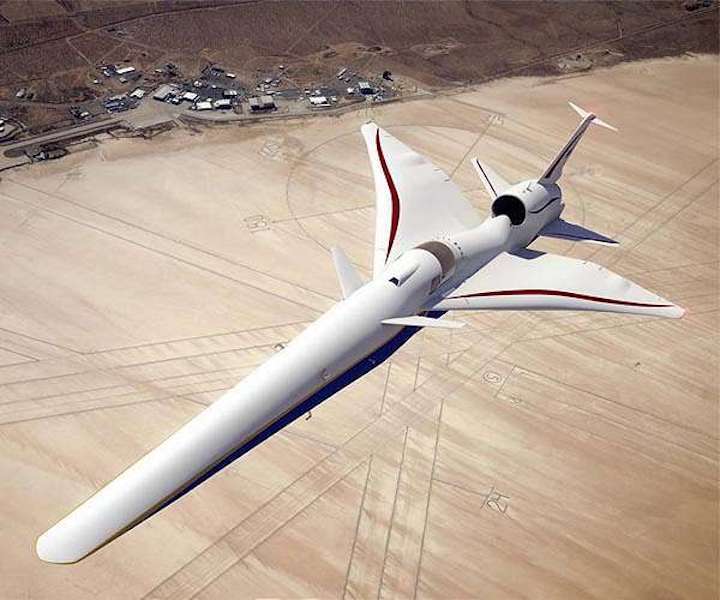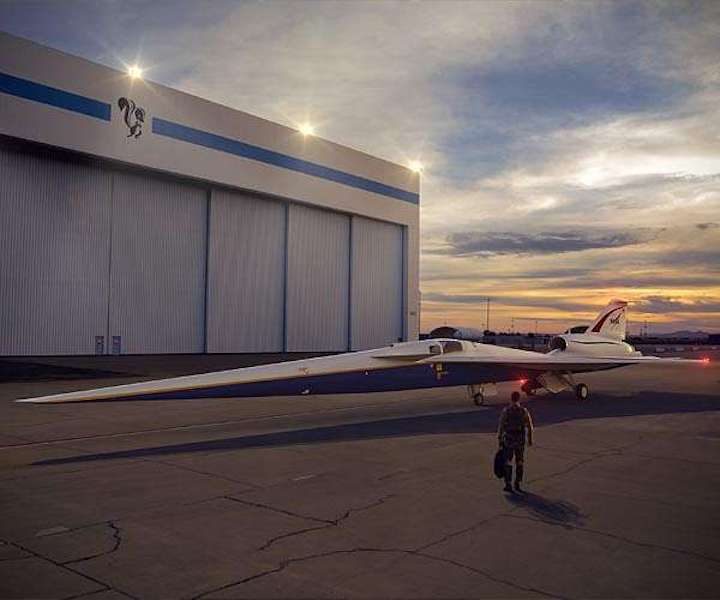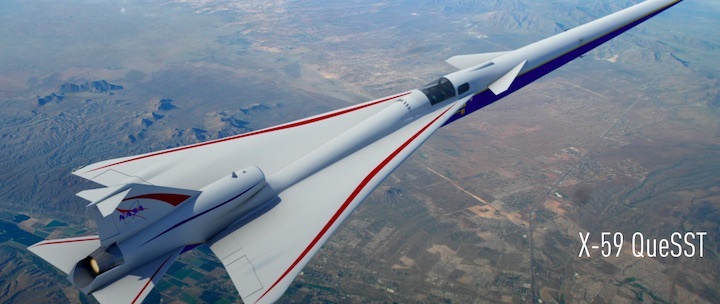25.11.2018

NASA has officially committed to a development timeline that will lead to the first flight of its X-59 Quiet Supersonic Technology (QueSST) aircraft in just three years.
This critical milestone comes after a rigorous review, Key Decision Point-C (KDP-C), that confirmed NASA's continued support of the X-59, in terms of funding, and established an achievable development timeline for NASA's first piloted, full-size X-plane in more than three decades.
"This aircraft has the potential to transform aviation in the United States and around the world by making faster-than-sound air travel over land possible for everyone," said NASA Administrator Jim Bridenstine. "We can't wait to see this bird fly!"
KDP-C commits NASA to the full X-59 development effort through flight-testing in 2021. The cost and schedule commitments outlined in KDP-C align the project with program management best practices that account for potential technical risks and budgetary uncertainty beyond the project's control.
"This is a monumental milestone for the project," said Jaiwon Shin, NASA's associate administrator for aeronautics. "I'm extremely proud of the team for its hard work getting to this point, and we all look forward to watching this aircraft take shape and then take flight."
The X-59 QueSST is shaped to reduce the loudness of a sonic boom to that of a gentle thump, if it's heard at all. The supersonic aircraft will be flown above select U.S. communities to measure public perception of the noise - data that will help regulators establish new rules for commercial supersonic air travel over land.
Management of X-59 QueSST development falls under the Low Boom Flight Demonstrator project, part of the Integrated Aviation Systems Program in NASA's Aeronautics Research Mission Directorate.
Quelle: SD
+++
Supersonic commercial travel begins to take shape at Lockheed Martin
Skunk Works

Earlier this year, NASA selected Lockheed Martin to design, build and flight test the Low Boom Flight Demonstrator.
Lockheed Martin Skunk Works began manufacturing the first part for the X-59 Quiet Supersonic Technology aircraft, marking a milestone to bring supersonic commercial travel over land one step closer to reality.
"The start of manufacturing on the project marks a great leap forward for the X-59 and the future of quiet supersonic commercial travel," said Peter Iosifidis, Low Boom Flight Demonstrator program manager Lockheed Martin Skunk Works.
"The long, slender design of the aircraft is the key to achieving a low sonic boom. As we enter into the manufacturing phase, the aircraft structure begins to take shape, bringing us one step closer to enabling supersonic travel for passengers around the world."
Earlier this year, NASA selected Lockheed Martin to design, build and flight test the Low Boom Flight Demonstrator.
The X-59 will conduct its first flight in 2021. It will be used to collect community response data on the acceptability of the quiet sonic boom generated by the aircraft, helping NASA establish an acceptable commercial supersonic noise standard to overturn current regulations banning supersonic travel over land.
X-59 is designed to cruise at 55,000 feet at a speed of about 940 mph and create a sound about as loud as a car door closing, 75 Perceived Level decibel (PLdB), instead of a sonic boom.
Quelle: SD
+++

X-59 QueSST
In partnership with NASA, the Lockheed Martin Skunk Works team is solving one of the most persistent challenges of supersonic flight – the sonic boom. NASA awarded Lockheed Martin Skunk Works a contract in February 2016 for the preliminary design of X-59, designed to reduce a sonic boom to a gentle thump.
In 2018, Lockheed Martin Skunk Works was selected for the design, build and flight test of the Low-Boom Flight Demonstrator (LBFD). The X-59 aircraft will collect community response data on the acceptability of the quiet sonic boom generated by our design, helping NASA establish an acceptable commercial supersonic noise standard to overturn current regulations banning supersonic travel over land. This would open the door to an entirely new global market for aircraft manufacturers, enabling passengers to travel anywhere in the world in half the time it takes today.
X-59 is designed to cruise at 55,000 feet at a speed of about 940 mph and create a sound about as loud as a car door closing, 75 Perceived Level decibel (PLdB), instead of a sonic boom.

